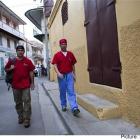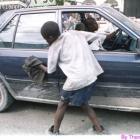ADVERTISEMENT
Photos
Kanaval Accident in Haiti
Here is a picture taken on Mardi Gras, following the Kanaval accident where 18 people got killedKanaval Accident in Haiti
On 17 February, around 8:00 GMT, the Mardi Gras float of the Barikad Crew got electrocuted on Rue Capois while it was passing under a high tension electric cable near the Champ de Mars. Star rapper of the group, known as "Phantom", was reported to be one of the first victims to receive the electric shock. According to a doctor who spoke to radio station, Zenith-FM, he is hopeful about Phantom's recovery. A singer of the band who was performing on the float, used a stick to move the power line to letting the float to pass; the person attempted was instantly electrocuted. A post in the 'You Tube' shows that the electric cable caught the head of a singer from the hip-hop band 'Barikad Crew' while the Mardi Gras float was passing the presidential stand packed with spectators. A three- day State mourning has been declared till Saturday, on the day of the State funeral. This is a common practice in many countries to have someone positioned atop a parade float to move low-hanging power lines. Recently, on the same day, another similar incident has taken three lives in Brazil.
Kanaval accident in Haiti
20 people Electrocuted in Haitian Carnival Barikad Crew float
On February 17th, while celebrating the Final moment of the Mardi Gras Carnival in Port-au-Prince before the Ash Wednesday, over 20 people were electrocuted on a float and more than 60 people were injured of stampede in an ensuing panic by the bystanders when a carnival float hit a power line. As per recent report 16 people have been died after the incident. The accident happened a little before 8:00 AM GMT, when someone on the float used a pole to move a live power line out of the way so that the float could pass under it. Hundreds of people had rushed to the hospitals, some carrying the victims and others searching for their family members and friends. Later on the same day, the new Haitian Prime Minister Evans Paul arranged a silent condolence parade on the Champ de Mars where the accident occurred. The Haitian President Martelly has expressed his deepest sympathy to the victims on a twitter message.
Women dancing - Haiti Kanaval Picture 2015
Carnival in Haiti is influenced by its diverse traditions, religious practices and cultural heritages of varied early settlers. Port-au-Prince hosts one of the largest Mardi Gras carnivals in the Caribbean and the North America. The celebration is greatly sponsored by the government, wealthy Haitian families and businessmen. It is celebrated with music, bands and parades with colorful floats on the trucks. The floats have sound systems to entertain people with Haitian music. Many food stands are set up on the streets that sell delicious Haitian barbecued treats and rum. The Carnival week is celebrated in a sophisticated manner with extravagant formal galas organized by many governmental offices, schools, musicians and other organizations. Everyone wants to take part in the President's Ball where the President of Haiti crowns the Carnival King and Queen.
The Crowd - Haiti Kanaval Picture 2015
History of Carnival in Rio Vs Haiti
Today, the carnival of Rio de Janerio is considered to be the biggest in the world with an average approximately two million participants recorded each day. The carnival set a record when the attendance of foreign visitors touched 400,000 in the festival of 2004. It is a 4-day celebration that starts on Saturday, and ends on Fat Tuesday, or Mardi-Gras. The carnival is a national holiday in Brazil. Although it officially runs from Friday night to noon of the following Wednesday, many Brazilians turn it into a 10-day holiday. In this summer, between February 13th and 17th, over 1 million visitors as well as local residents attended over hundreds of Rio street parties and balls and there was plenty to do for everyone. The competition among the top samba schools took the celebration to an extravagant level. Although Carnival is celebrated in many parts Brazil, it is Rio that is considered as the Carnival capital of the world-- Rio has always been the main attraction among the tourists. Rio carnival parades are filled with revelers, gorgeous floats and adornments from numerous samba schools (over 200) which are located in Rio. The schools participate in the celebration in a great orderly manner.
Haiti during Kanaval - Haiti Kanaval Picture 2015
The first recorded carnival in Rio de Janerio dates back to the 1723 A.D, much earlier than in Haiti, where it started in the year of its declaration of independence in 1804. The immigrants from the Portuguese islands of Açores, Madeira and Cabo Verde introduced the festival in Rio named "Entrudo" which means Shrove Tuesday and the two days preceding it, when it was formerly customary to attend confession. However, the idea and objective of the earlier celebration was to make everybody soaked wet with buckets of water and limes. Even the emperor used to take part in the fun.
The Dress - Haiti Kanaval Picture 2015
Carnival in Specific Countries Compared to Haiti
The festival season varies from country to country and city to city. Some traditions consider Mardi Gras during the entire period between Epiphany or Twelfth Night and Ash Wednesday. While others treat the final three-day period before Ash Wednesday as the Mardi Gras. In some American cities, it is now called "Mardi Gras Day". Carnival first came to Trinidad (as "J'Ouvert") in the Caribbean with the French Catholic plantation slave owners during the 1700s. Today it is very famous for the carnival in the Caribbean and Trinidadians are famous for transplanting their carnival culture to new places. Perhaps Mardi Gras is most majestically celebrated in New Orleans and Rio de Janeiro. In Mexico, it is called as "Martes de Carnaval". Carnival in Spain is a charming event where everyone participates even those with little means; it is well known for its vibrant costumes and masks. Although the Carnival celebration in Spain is not as esthetically beautiful as in Venice nor as over the top and dance orientated as in Brazil (Rio).
This Catholic festival has been imported to Haiti mainly by the early European settlers. Haitian carnival is, however, heavily influenced by its local customs and rituals like Voodoo and Haitian music. Music always remain the central part of the celebration. Participants perform comedy acts often satirizing political topics. People take part in parade floats where music systems are set up on trucks. It is celebrated in grand scale in the capital city and Jacmel and on certain smaller scales in smaller Haitian provinces. Jacmel is the art capital of Haiti. The artisans from this town make beautiful papier-mâché masks and costumes that represent religious or ghoulish creatures and often mocked political figures. Carnival is a good source of revenue to the country's economy.
Beautiful Decoration - Haiti Kanaval Picture 2015
The word "Mardi Gras" in French means "Fat Tuesday". Mardi Gras is a Roman Catholic and Eastern Orthodox traditions, a season prelude to Lent, the 40 days of penance between Ash Wednesday and Easter Sunday, when the merrymakers would binge on all the meat, eggs, milk and cheese. Because during the Lenten season they cannot eat any of them with lone exception of fish. Mardi Gras is celebrated in most countries with Christian dominance. It is celebrated in Europe, mainly in Catholic Southern Europe like Italy (as Martedi Grasso), Spain (Carnestoltes), Portugal (Terça-feira Gorda), France and Southern Germany (Bavaria as "Karneval"). Carnival of Venice is the most well known for its extravagance.
Time to celebrate - Haiti Kanaval Picture 2015
Mardi Gras & Haiti Celebration
Some historians are of the opinion that "Lupercalia", the god of fertility and the god of agriculture and pastoral shepherds, worshipped by the ancient Romans was the first form of Mardi Gras. Its celebration had a Mardi Gras like similarities-- feasting, drinking and enjoying the "pleasures of the flesh". In Haiti, the carnival is heavily influenced by local customs and rituals like Voodoo and Haitian music. People take part in parades with floats which are flamboyantly decorated, music systems are set up on trucks. Participants perform comedy acts often satirizing political topics. Music always remain the central part of their celebration. Haiti is a country with a diverse cultural background. The most of the population follows Roman Catholicism, 16% of the population are Protestants. However, voodoo religion was carried in from Africa by their ancestors and in combination of other tribal religious beliefs, the majority of the Haitians has faith in voodoo practices. Thus, Haiti celebrates rituals, traditions and customs in diversified forms drawn from vast and diverse cultural heritage of French, Spanish and African traditions as well as its Caribbean island culture. Mardi Gras, other than a religious celebration, is a good source of revenue for the country.
The Biggest Celebration in Haiti - Haiti Kanaval Picture 2015
The Biggest Celebration in Haiti - Haiti Kanaval Picture 2015
What is called Mardi Gras in New Orleans is better known in Haiti as 'Carnival'. The celebration of Mardi Gras in Haiti begins every year on January 6 (on Twelfth Night ) and culminates in a four-day party that ends on Mardi Gras, i.e., the day preceding Ash Wednesday (the first day of Lenten season). In some countries Mardi Gras or Shrove Tuesday is also known as Pancake Day as they consume pancakes on this day. However, the preparation for the celebration begins much earlier in Haiti. Young adults and children begin making their masks as early as in October. Every Sunday, between January 6 and the Lent,people come out on the streets to watch and participate in the colorful processions of singing and dancing. Carnival bands play drums and trumpets on the streets and as the time proceeds towards the Lent, everything gradually becomes more and more elaborate.
Dwyane Wade and Chris Bosh in Haiti for Carnival
Here are several pictures of NBA stars Dwyane Wade and Chris Bosh with wives in Haiti for Carnival 2015
Haiti's Carnival received a boost in publicity with the arrival of NBA Miami Heat stars Dwayne Wade and Chris Bosh in Port-au-Prince. Tourism Minister Stephanie Villedrouin welcomed them to the capital.
Wade and Bosh plan to attend Sunday's parade in Champs de Mars. Along with their wives the players hope to get three days of R and R before returning for the final 30 games of the season.

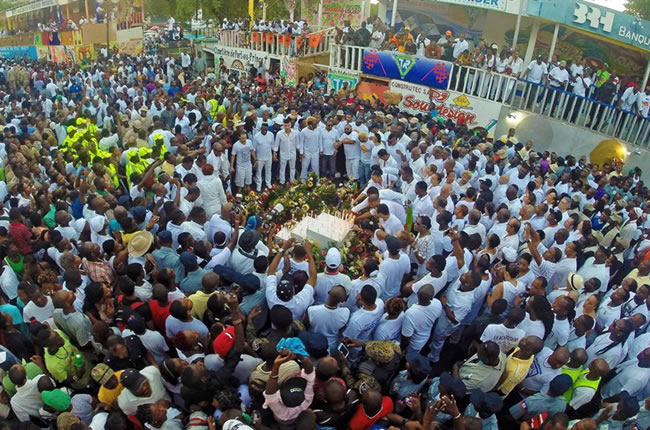

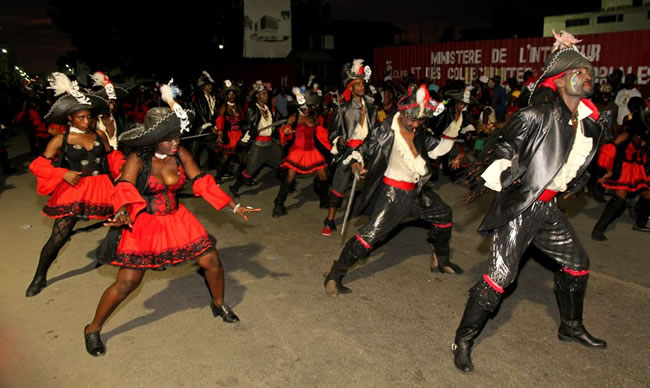
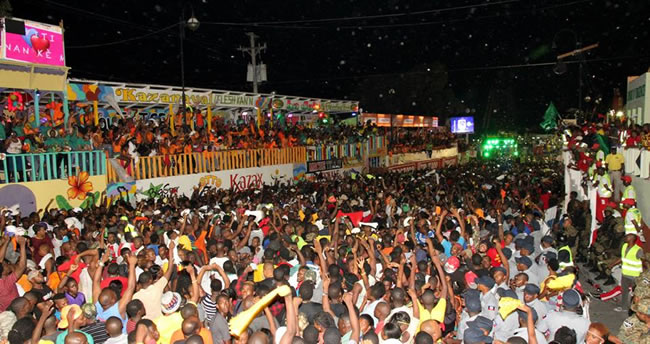
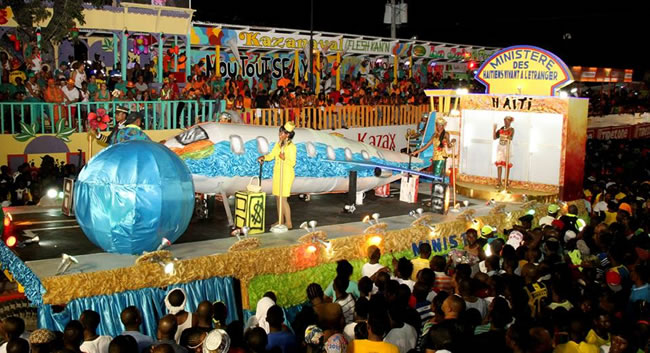
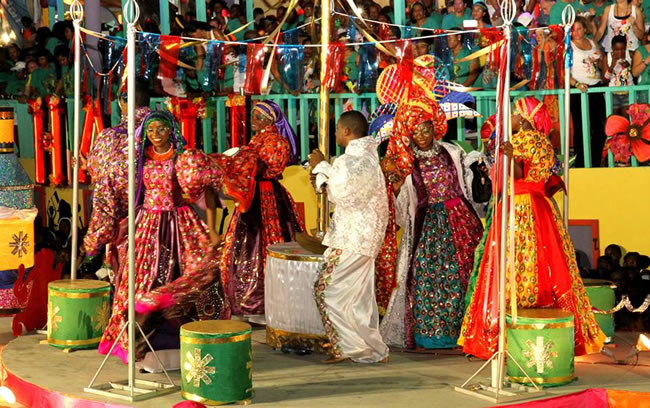
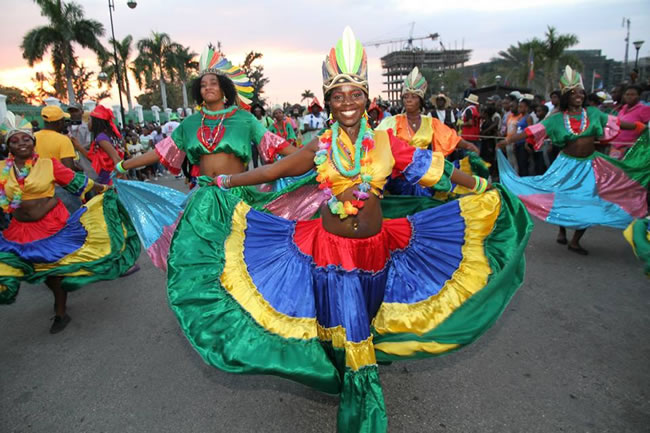
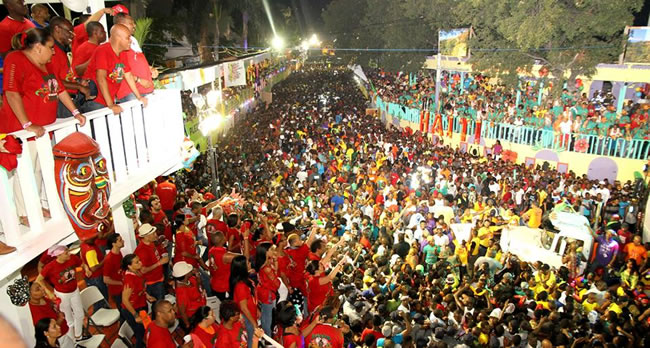
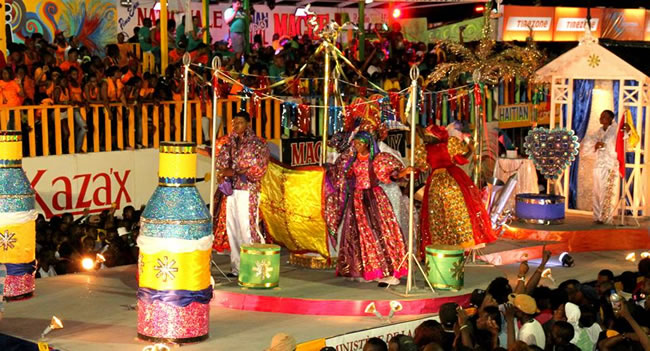

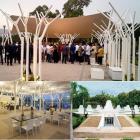 The Gardens of the MUPANAH
The Gardens of the MUPANAH  Should birthright citizenship be eliminated in the US?
Should birthright citizenship be eliminated in the US?  Texaco Gas Station In Haiti
Texaco Gas Station In Haiti 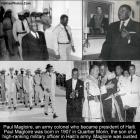 Paul Eugène Magloire, born in Quartier Morin
Paul Eugène Magloire, born in Quartier Morin 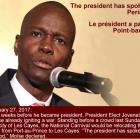 Jovenel Moise, the president has spoken. Period
Jovenel Moise, the president has spoken. Period 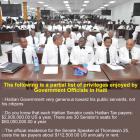 Partial list of privileges enjoyed by Government officials in...
Partial list of privileges enjoyed by Government officials in...  Delimart Plaza, Delmas 32, Port-au-Prince, Haiti being looted
Delimart Plaza, Delmas 32, Port-au-Prince, Haiti being looted  Commissioner Frantz Pierre indicted for accepting bribes
Commissioner Frantz Pierre indicted for accepting bribes 